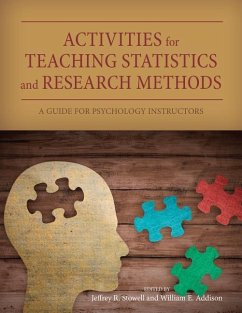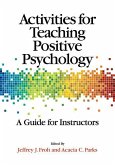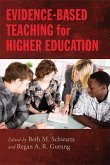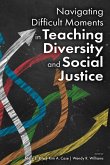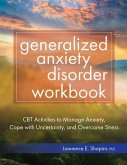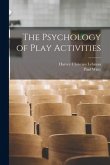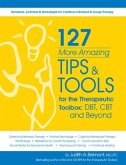Activities for Teaching Statistics and Research Methods
A Guide for Psychology Instructors
Herausgeber: Stowell, Jeffrey R; Addison, William E
Schade – dieser Artikel ist leider ausverkauft. Sobald wir wissen, ob und wann der Artikel wieder verfügbar ist, informieren wir Sie an dieser Stelle.
Activities for Teaching Statistics and Research Methods
A Guide for Psychology Instructors
Herausgeber: Stowell, Jeffrey R; Addison, William E
- Broschiertes Buch
- Merkliste
- Auf die Merkliste
- Bewerten Bewerten
- Teilen
- Produkt teilen
- Produkterinnerung
- Produkterinnerung
A sound understanding of statistics and research methods is essential for all psychologists, and these topics are core components of both Advanced Placement and undergraduate psychology curricula. This book offers a comprehensive collection of original, pedagogically sound, classroom-tested activities that engage students, teach principles, and inspire teachers.
Andere Kunden interessierten sich auch für
![Activities for Teaching Positive Psychology Activities for Teaching Positive Psychology]() Jeffrey FrohActivities for Teaching Positive Psychology45,99 €
Jeffrey FrohActivities for Teaching Positive Psychology45,99 €![Evidence-Based Teaching for Higher Education Evidence-Based Teaching for Higher Education]() Evidence-Based Teaching for Higher Education51,99 €
Evidence-Based Teaching for Higher Education51,99 €![Navigating Difficult Moments in Teaching Diversity and Social Justice Navigating Difficult Moments in Teaching Diversity and Social Justice]() Navigating Difficult Moments in Teaching Diversity and Social Justice42,99 €
Navigating Difficult Moments in Teaching Diversity and Social Justice42,99 €![Generalized Anxiety Disorder Workbook: CBT Activities to Manage Anxiety, Cope with Uncertainty, and Overcome Stress Generalized Anxiety Disorder Workbook: CBT Activities to Manage Anxiety, Cope with Uncertainty, and Overcome Stress]() Lawrence ShapiroGeneralized Anxiety Disorder Workbook: CBT Activities to Manage Anxiety, Cope with Uncertainty, and Overcome Stress21,99 €
Lawrence ShapiroGeneralized Anxiety Disorder Workbook: CBT Activities to Manage Anxiety, Cope with Uncertainty, and Overcome Stress21,99 €![The Psychology of Play Activities The Psychology of Play Activities]() Harvey Christian LehmanThe Psychology of Play Activities24,99 €
Harvey Christian LehmanThe Psychology of Play Activities24,99 €![127 More Amazing Tips and Tools for the Therapeutic Toolbox: Dbt, CBT and Beyond: Handouts, Activities & Worksheets for Creative Individual & Group Th 127 More Amazing Tips and Tools for the Therapeutic Toolbox: Dbt, CBT and Beyond: Handouts, Activities & Worksheets for Creative Individual & Group Th]() Judith Belmont127 More Amazing Tips and Tools for the Therapeutic Toolbox: Dbt, CBT and Beyond: Handouts, Activities & Worksheets for Creative Individual & Group Th24,99 €
Judith Belmont127 More Amazing Tips and Tools for the Therapeutic Toolbox: Dbt, CBT and Beyond: Handouts, Activities & Worksheets for Creative Individual & Group Th24,99 €
A sound understanding of statistics and research methods is essential for all psychologists, and these topics are core components of both Advanced Placement and undergraduate psychology curricula. This book offers a comprehensive collection of original, pedagogically sound, classroom-tested activities that engage students, teach principles, and inspire teachers.
Produktdetails
- Produktdetails
- Verlag: American Psychological Association (APA)
- Seitenzahl: 133
- Erscheinungstermin: 13. März 2017
- Englisch
- Abmessung: 274mm x 214mm x 10mm
- Gewicht: 342g
- ISBN-13: 9781433827143
- ISBN-10: 143382714X
- Artikelnr.: 47714066
- Herstellerkennzeichnung
- Libri GmbH
- Europaallee 1
- 36244 Bad Hersfeld
- gpsr@libri.de
- Verlag: American Psychological Association (APA)
- Seitenzahl: 133
- Erscheinungstermin: 13. März 2017
- Englisch
- Abmessung: 274mm x 214mm x 10mm
- Gewicht: 342g
- ISBN-13: 9781433827143
- ISBN-10: 143382714X
- Artikelnr.: 47714066
- Herstellerkennzeichnung
- Libri GmbH
- Europaallee 1
- 36244 Bad Hersfeld
- gpsr@libri.de
Jeffrey R. Stowell, PhD, earned his doctoral degree in psychobiology from The Ohio State University. He is a professor and the assistant chair of the psychology department at Eastern Illinois University (EIU), where he teaches courses in biological psychology, sensation and perception, learning, and introductory psychology. He has published articles in Teaching of Psychology, Scholarship of Teaching and Learning in Psychology , and other teaching-related journals on the use of technology in teaching. He presents regularly at regional psychology conferences and mentors undergraduate and graduate student research. He participated in the 2008 National Conference on Undergraduate Education in Psychology: A Blueprint for the Future of the Discipline. He received the Society for Teaching of Psychology's Early Career Teaching Award and served as the society's Internet editor for 8 years. At EIU, Dr. Stowell has earned the honors of Professor Laureate and Distinguished Honors Faculty Award; he is a three-time winner of the Psi Chi Chapter Faculty of the Year Award and has received the College of Sciences' highest awards in three different areas (teaching, research, and service). William E. Addison, PhD, is a professor in the psychology department at EIU, where he has regularly taught courses in statistics and research methods. He is a Fellow and former president of APA Division 2 (Society for the Teaching of Psychology), and he is a charter Fellow of the Midwestern Psychological Association. He has served as a consulting editor and reviewer for the journal Teaching of Psychology, as a member of the GRE Psychology Test Development Committee, and as a faculty consultant for the annual Advanced Placement Exam in Psychology. He participated in the 1999 National Forum on Psychology Partnerships and the 2008 National Conference on Undergraduate Education in Psychology: A Blueprint for the Future of the Discipline. Dr. Addison presents regularly at annual meetings of APA and the Midwestern Psychological Association and at the Midwest Institute for Students and Teachers of Psychology. His publications include teaching-oriented articles in Teaching of Psychology and the College Student Journal. He has received a number of awards for his teaching, including the EIU Distinguished Faculty Award and the EIU Distinguished Honors Faculty Award.
Contributors
Acknowledgments
Introduction
Jeffrey R. Stowell and William E. Addison
Part I: Statistics
Chapter 1: Reducing Anxiety in the Statistics Classroom
Tamarah Smith
Chapter 2: How to Lie With the Y-Axis
Thomas E. Heinzen
Chapter 3: Summarizing Data Using Measures of Central Tendency: A Group
Activity
Thomson J. Ling
Chapter 4: How Fast Is Your Internet? An Activity for Teaching Variance and
Standard Deviation
Bonnie A. Green and Jeffrey R. Stowell
Chapter 5: Getting Dicey: Thinking About Normal Distributions and
Descriptive Statistics
Robert McEntarffer and Maria Vita
Chapter 6: A Low-Anxiety Introduction to the Standard Normal Distribution
and Measures of Relative Standing
Laura Brandt and William E. Addison
Chapter 7: Using the Heat Hypothesis to Explore the Statistical Methods of
Correlation and Regression
George Y. Bizer
Chapter 8: Active Learning for Understanding Sampling Distributions
David S. Kreiner
Chapter 9: Testing Students for ESP: Demonstrating the Role of Probability
in Hypothesis Testing
William E. Addison
Chapter 10: Using a TV Game Show Format to Demonstrate Confidence Intervals
Alexis Grosofsky
Chapter 11: Real-Life Application of Type I and Type II Decision Errors
Bernard C. Beins
Chapter 12: Factors That Influence Statistical Power
Michael J. Tagler and Christopher L. Thomas
Chapter 13: An Interdisciplinary Activity for p Values, Effect Sizes, and
the Law of Small Numbers
Andrew N. Christopher
Part II: Research Methods
Chapter 14: An Activity for Teaching the Scientific Method
R. Eric Landrum
Chapter 15: Linking Identification of Independent and Dependent Variables
to the Goals of Science
Mary E. Kite
Chapter 16: Everything Is Awesome: Building Operational Definitions With
Play-Doh and LEGOs
Stephanie E. Afful and Karen Wilson
Chapter 17: A Demonstration of Random Assignment That Is Guaranteed to Work
(95% of the Time)
Thomas P. Pusateri
Chapter 18: Identifying Confounding Factors in Psychology Research
Chris Jones-Cage
Chapter 19: Demonstrating Experimenter and Participant Bias
Caridad F. Brito
Chapter 20: The Most Unethical Researcher: An Activity for Demonstrating
Research Ethics in Psychology
Sue Frantz
Chapter 21: The Ethics of Behavioral Research Using Animals: A Classroom
Exercise (PDF, 909KB)
Harold Herzog
Chapter 22: Demonstrating Interobserver Reliability in Naturalistic
Settings
Janie H. Wilson and Shauna W. Joye
Chapter 23: Using a Classic Model of Stress to Teach Survey Construction
and Analysis
Joseph A. Wister
Chapter 24: Using Childhood Memories to Demonstrate Principles of
Qualitative Research
Steven A. Meyers
Chapter 25: Using a Peer-Writing Workshop to Help Students Learn American
Psychological Association Style
Dana S. Dunn
Index
About the Editors
Acknowledgments
Introduction
Jeffrey R. Stowell and William E. Addison
Part I: Statistics
Chapter 1: Reducing Anxiety in the Statistics Classroom
Tamarah Smith
Chapter 2: How to Lie With the Y-Axis
Thomas E. Heinzen
Chapter 3: Summarizing Data Using Measures of Central Tendency: A Group
Activity
Thomson J. Ling
Chapter 4: How Fast Is Your Internet? An Activity for Teaching Variance and
Standard Deviation
Bonnie A. Green and Jeffrey R. Stowell
Chapter 5: Getting Dicey: Thinking About Normal Distributions and
Descriptive Statistics
Robert McEntarffer and Maria Vita
Chapter 6: A Low-Anxiety Introduction to the Standard Normal Distribution
and Measures of Relative Standing
Laura Brandt and William E. Addison
Chapter 7: Using the Heat Hypothesis to Explore the Statistical Methods of
Correlation and Regression
George Y. Bizer
Chapter 8: Active Learning for Understanding Sampling Distributions
David S. Kreiner
Chapter 9: Testing Students for ESP: Demonstrating the Role of Probability
in Hypothesis Testing
William E. Addison
Chapter 10: Using a TV Game Show Format to Demonstrate Confidence Intervals
Alexis Grosofsky
Chapter 11: Real-Life Application of Type I and Type II Decision Errors
Bernard C. Beins
Chapter 12: Factors That Influence Statistical Power
Michael J. Tagler and Christopher L. Thomas
Chapter 13: An Interdisciplinary Activity for p Values, Effect Sizes, and
the Law of Small Numbers
Andrew N. Christopher
Part II: Research Methods
Chapter 14: An Activity for Teaching the Scientific Method
R. Eric Landrum
Chapter 15: Linking Identification of Independent and Dependent Variables
to the Goals of Science
Mary E. Kite
Chapter 16: Everything Is Awesome: Building Operational Definitions With
Play-Doh and LEGOs
Stephanie E. Afful and Karen Wilson
Chapter 17: A Demonstration of Random Assignment That Is Guaranteed to Work
(95% of the Time)
Thomas P. Pusateri
Chapter 18: Identifying Confounding Factors in Psychology Research
Chris Jones-Cage
Chapter 19: Demonstrating Experimenter and Participant Bias
Caridad F. Brito
Chapter 20: The Most Unethical Researcher: An Activity for Demonstrating
Research Ethics in Psychology
Sue Frantz
Chapter 21: The Ethics of Behavioral Research Using Animals: A Classroom
Exercise (PDF, 909KB)
Harold Herzog
Chapter 22: Demonstrating Interobserver Reliability in Naturalistic
Settings
Janie H. Wilson and Shauna W. Joye
Chapter 23: Using a Classic Model of Stress to Teach Survey Construction
and Analysis
Joseph A. Wister
Chapter 24: Using Childhood Memories to Demonstrate Principles of
Qualitative Research
Steven A. Meyers
Chapter 25: Using a Peer-Writing Workshop to Help Students Learn American
Psychological Association Style
Dana S. Dunn
Index
About the Editors
Contributors
Acknowledgments
Introduction
Jeffrey R. Stowell and William E. Addison
Part I: Statistics
Chapter 1: Reducing Anxiety in the Statistics Classroom
Tamarah Smith
Chapter 2: How to Lie With the Y-Axis
Thomas E. Heinzen
Chapter 3: Summarizing Data Using Measures of Central Tendency: A Group
Activity
Thomson J. Ling
Chapter 4: How Fast Is Your Internet? An Activity for Teaching Variance and
Standard Deviation
Bonnie A. Green and Jeffrey R. Stowell
Chapter 5: Getting Dicey: Thinking About Normal Distributions and
Descriptive Statistics
Robert McEntarffer and Maria Vita
Chapter 6: A Low-Anxiety Introduction to the Standard Normal Distribution
and Measures of Relative Standing
Laura Brandt and William E. Addison
Chapter 7: Using the Heat Hypothesis to Explore the Statistical Methods of
Correlation and Regression
George Y. Bizer
Chapter 8: Active Learning for Understanding Sampling Distributions
David S. Kreiner
Chapter 9: Testing Students for ESP: Demonstrating the Role of Probability
in Hypothesis Testing
William E. Addison
Chapter 10: Using a TV Game Show Format to Demonstrate Confidence Intervals
Alexis Grosofsky
Chapter 11: Real-Life Application of Type I and Type II Decision Errors
Bernard C. Beins
Chapter 12: Factors That Influence Statistical Power
Michael J. Tagler and Christopher L. Thomas
Chapter 13: An Interdisciplinary Activity for p Values, Effect Sizes, and
the Law of Small Numbers
Andrew N. Christopher
Part II: Research Methods
Chapter 14: An Activity for Teaching the Scientific Method
R. Eric Landrum
Chapter 15: Linking Identification of Independent and Dependent Variables
to the Goals of Science
Mary E. Kite
Chapter 16: Everything Is Awesome: Building Operational Definitions With
Play-Doh and LEGOs
Stephanie E. Afful and Karen Wilson
Chapter 17: A Demonstration of Random Assignment That Is Guaranteed to Work
(95% of the Time)
Thomas P. Pusateri
Chapter 18: Identifying Confounding Factors in Psychology Research
Chris Jones-Cage
Chapter 19: Demonstrating Experimenter and Participant Bias
Caridad F. Brito
Chapter 20: The Most Unethical Researcher: An Activity for Demonstrating
Research Ethics in Psychology
Sue Frantz
Chapter 21: The Ethics of Behavioral Research Using Animals: A Classroom
Exercise (PDF, 909KB)
Harold Herzog
Chapter 22: Demonstrating Interobserver Reliability in Naturalistic
Settings
Janie H. Wilson and Shauna W. Joye
Chapter 23: Using a Classic Model of Stress to Teach Survey Construction
and Analysis
Joseph A. Wister
Chapter 24: Using Childhood Memories to Demonstrate Principles of
Qualitative Research
Steven A. Meyers
Chapter 25: Using a Peer-Writing Workshop to Help Students Learn American
Psychological Association Style
Dana S. Dunn
Index
About the Editors
Acknowledgments
Introduction
Jeffrey R. Stowell and William E. Addison
Part I: Statistics
Chapter 1: Reducing Anxiety in the Statistics Classroom
Tamarah Smith
Chapter 2: How to Lie With the Y-Axis
Thomas E. Heinzen
Chapter 3: Summarizing Data Using Measures of Central Tendency: A Group
Activity
Thomson J. Ling
Chapter 4: How Fast Is Your Internet? An Activity for Teaching Variance and
Standard Deviation
Bonnie A. Green and Jeffrey R. Stowell
Chapter 5: Getting Dicey: Thinking About Normal Distributions and
Descriptive Statistics
Robert McEntarffer and Maria Vita
Chapter 6: A Low-Anxiety Introduction to the Standard Normal Distribution
and Measures of Relative Standing
Laura Brandt and William E. Addison
Chapter 7: Using the Heat Hypothesis to Explore the Statistical Methods of
Correlation and Regression
George Y. Bizer
Chapter 8: Active Learning for Understanding Sampling Distributions
David S. Kreiner
Chapter 9: Testing Students for ESP: Demonstrating the Role of Probability
in Hypothesis Testing
William E. Addison
Chapter 10: Using a TV Game Show Format to Demonstrate Confidence Intervals
Alexis Grosofsky
Chapter 11: Real-Life Application of Type I and Type II Decision Errors
Bernard C. Beins
Chapter 12: Factors That Influence Statistical Power
Michael J. Tagler and Christopher L. Thomas
Chapter 13: An Interdisciplinary Activity for p Values, Effect Sizes, and
the Law of Small Numbers
Andrew N. Christopher
Part II: Research Methods
Chapter 14: An Activity for Teaching the Scientific Method
R. Eric Landrum
Chapter 15: Linking Identification of Independent and Dependent Variables
to the Goals of Science
Mary E. Kite
Chapter 16: Everything Is Awesome: Building Operational Definitions With
Play-Doh and LEGOs
Stephanie E. Afful and Karen Wilson
Chapter 17: A Demonstration of Random Assignment That Is Guaranteed to Work
(95% of the Time)
Thomas P. Pusateri
Chapter 18: Identifying Confounding Factors in Psychology Research
Chris Jones-Cage
Chapter 19: Demonstrating Experimenter and Participant Bias
Caridad F. Brito
Chapter 20: The Most Unethical Researcher: An Activity for Demonstrating
Research Ethics in Psychology
Sue Frantz
Chapter 21: The Ethics of Behavioral Research Using Animals: A Classroom
Exercise (PDF, 909KB)
Harold Herzog
Chapter 22: Demonstrating Interobserver Reliability in Naturalistic
Settings
Janie H. Wilson and Shauna W. Joye
Chapter 23: Using a Classic Model of Stress to Teach Survey Construction
and Analysis
Joseph A. Wister
Chapter 24: Using Childhood Memories to Demonstrate Principles of
Qualitative Research
Steven A. Meyers
Chapter 25: Using a Peer-Writing Workshop to Help Students Learn American
Psychological Association Style
Dana S. Dunn
Index
About the Editors

